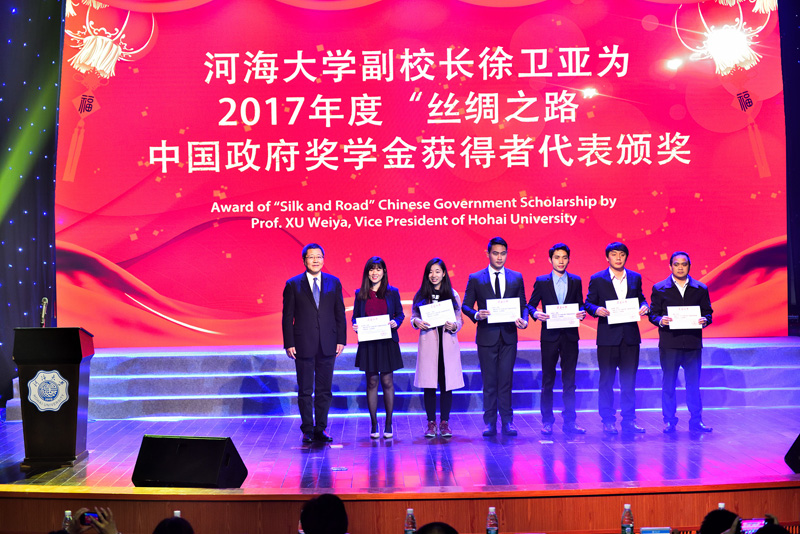Water Resources Minister sends wishes to Hohai intl students
(english.jsjyt.gov.cn) Updated:2018-03-19
Students engaged in the Lancang-Mekong cooperative program of water resources at Hohai University are awarded “Silk Road” Chinese Government Scholarship by the school’s vice president Xu Weiya (far left) on Dec 29, 2017. [Photo provided to english.jsjyt.gov.cn]
The 31 students from the Lancang-Mekong cooperative program of water resources at Hohai University (HHU), Jiangsu province, recently got a reply from China’s Water Resources Minister Chen Lei, one month after extending their gratitude for being awarded the “Silk Road” Chinese Government Scholarship on September 2017.
The students, who have been working at water-related departments in Mekong countries of Cambodia, Laos, Myanmar, Thailand and Vietnam before coming to China, are now engaged in HHU’s traditional characteristic majors of Hydrology and Water Resources, Water Conservancy and Hydropower Engineering, and Harbor, Coastal and Offshore Engineering.
During the past six months, the students have learned advanced technologies in areas of water resources management, hydraulic engineering, and flood prevention, and exchanged ideas and practices with other international students.
Minister Chen Lei ardently hoped the students can take active attitude learning and improving professional skills, keep promoting Chinese and Mekong water-related cultures, so as to work as envoys and constructors and to put the achievements of Lancang-Mekong Cooperation (LMC) at more down-to-earth levels.
The students were excited to get a reply from the minister. Nang Doi from Myanmar said she will fully dedicate herself to propelling water cooperation and contribute to the socio-economic development along Mekong countries.
“I would like to learn more about Chinese culture and make more Chinese friends,” Doi said.
The countries involved in the Lancang-Mekong region have long enjoyed a common destiny. The Lancang River rises from China’s Qinghai-Tibet Plateau, known as the Mekong when it flows out of China, and menders almost 5,000 kilometers through China, Myanmar, Laos, Vietnam, Thailand and Cambodia before finally emptying into the South China Sea.
Now, with the Chinese government actively promoting a shared goal of sustainable development and strengthening personnel training on water treatment, the Mekong countries are brought closely together in tackling the huge challenges of flood, drought, ecosystem damage, water pollution and extreme climate change of different degrees.
Hohai University contributed to this story.

